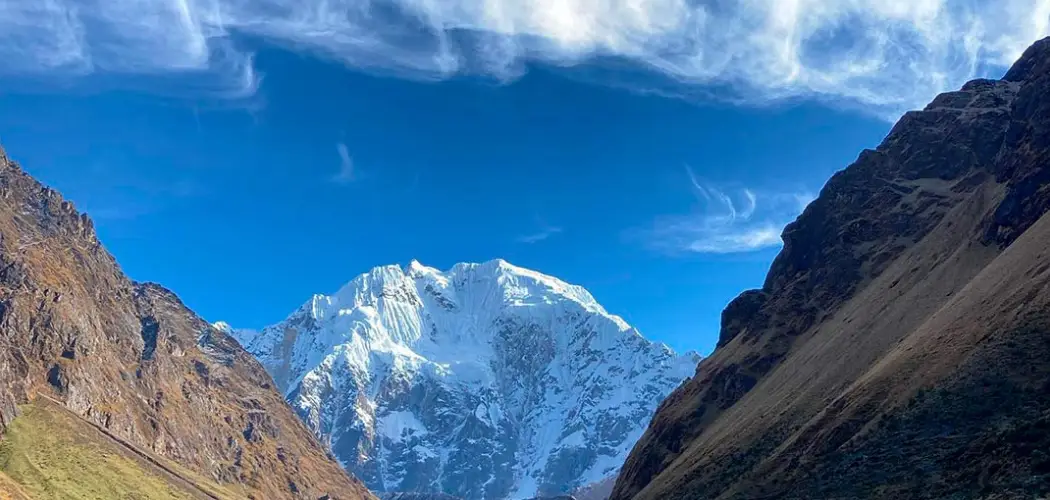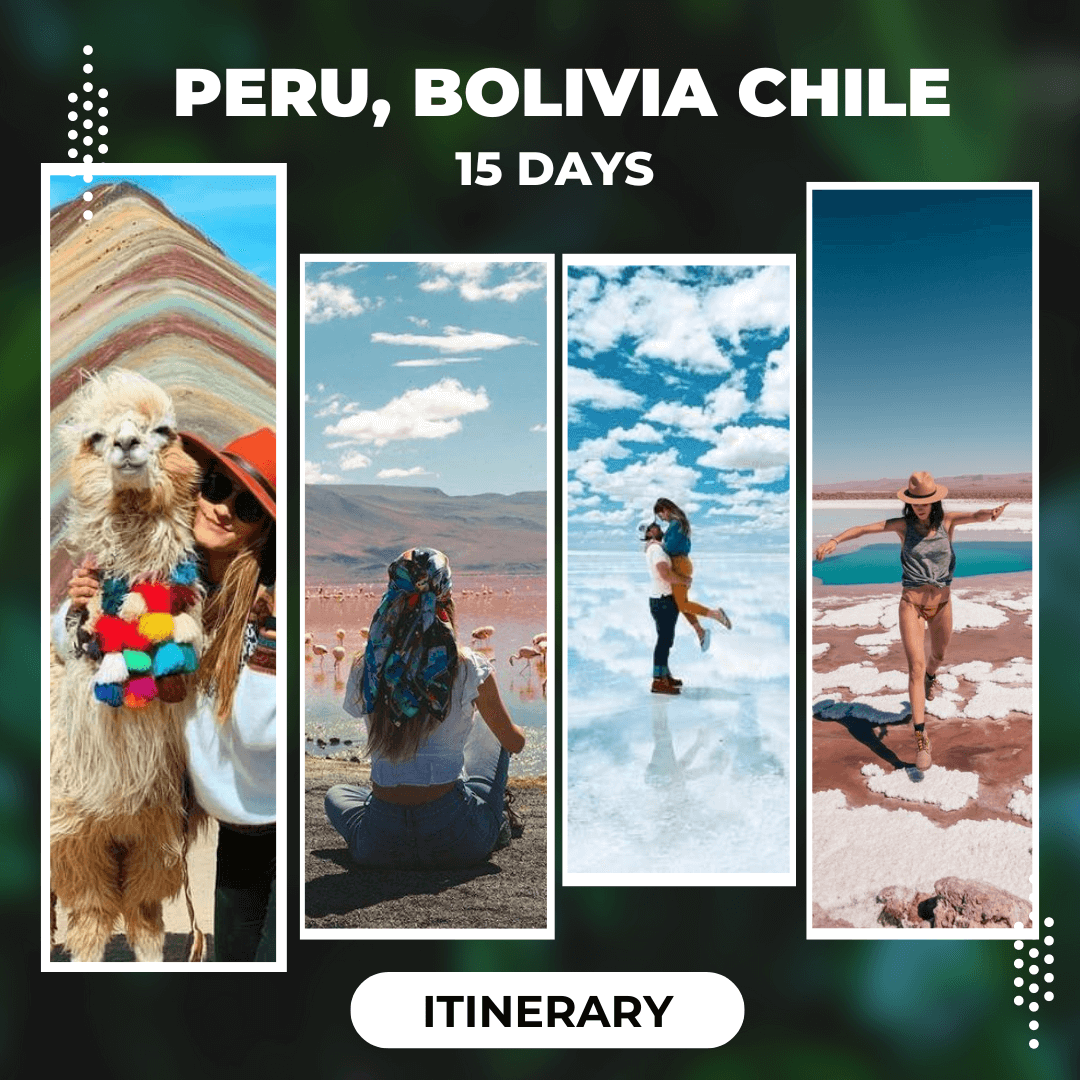
Discovering the Meaning of Salkantay: A Journey through Andean History and Mysticism
Join us as we explore the meaning of Salkantay, a name that resonates with the echoes of the Andes and envelops mysteries of ancient civilizations. This majestic peak has not only guarded closely the secrets of the Incas but also remains a spiritual symbol that connects the past with the present. Accompany us on a journey through the cobblestone paths of history and the mists of Andean mysticism.
What does Salkantay mean?

Salkantay is a word that originates from Quechua, the ancestral language of the Andes. Its meaning is “Wild Mountain,” and this name is no coincidence. Salkantay is the highest peak in the Vilcabamba Mountain Range, in the Peruvian Andes, soaring majestically to 6,271 meters above sea level. This imposing mountain has been revered for centuries by local communities, both for its imposing presence and its spiritual significance.
A Symbol of Spiritual Connection
The meaning of Salkantay transcends simple geography; it is a powerful symbol in Andean cosmology. According to local beliefs, each mountain has a spirit, known as ‘Apu,’ that protects nearby communities and offers spiritual guidance. Salkantay is particularly significant because it is considered the guardian of the region and a point of connection between the earthly and celestial worlds.
For the Incas, the meaning of Salkantay was also linked to astrology and agriculture. They believed that mountains controlled the weather and, therefore, the fertility of the land, which was vital for the sustenance of their civilization. Therefore, Salkantay was not only a physical landmark in their vast territories but also an essential part of their cultural and spiritual development.
A Challenge for Adventurers
Today, the meaning of Salkantay also includes the challenge it poses for adventurers from around the world. Trekking the Salkantay Trail is one of the most popular alternative routes to reach Machu Picchu, offering spectacular views and a deep connection with the Andean nature. This trail is not just a physical journey but a spiritual pilgrimage that allows travelers to follow in the footsteps of the Incas and experience a fragment of their rich spiritual heritage.
How did Salkantay influence Andean beliefs?

Salkantay, an imposing mountain located in the Peruvian Andes, has been a central figure in Andean cosmology since pre-Inca times. Its majestic presence not only dominates the landscape but also deeply encapsulates the meaning of Salkantay within the local culture. This peak is more than a mountain; it is an Apu, a Quechua term referring to the deities of the mountains believed to protect communities through their power and sacred connection to nature.
The Protective Spirit
For the indigenous peoples surrounding Salkantay, this Apu is not just a towering rock formation; it represents a living being that offers protection and spiritual guidance. Belief in Salkantay as an Apu is fundamental to understanding the meaning of Salkantay in Andean spirituality. The Incas, whose influence extended across much of South America, regarded the Apus as intermediaries between the earthly and celestial worlds. Worshiping Salkantay involved making offerings and ceremonies to gain its favor, thus ensuring the fertility of the land and the prosperity of the community.
This sacred bond is reflected in the various practices and rituals that persist to this day. During the annual Qoyllur Rit’i festival, for example, thousands of pilgrims visit the Salkantay region, performing processions and dances that highlight the respect and reverence for this powerful Apu. This event not only strengthens the community but also reaffirms Salkantay’s position as a spiritual and cultural pillar.
Guardian of the Paths
The meaning of Salkantay is also manifested in its role as the guardian of one of the most challenging and spiritual paths to Machu Picchu: the Salkantay Trail. This route is not just a tourist trail but a pilgrimage that offers walkers a deep connection with nature and their ancestors. By venturing along this path, travelers not only seek to marvel at the panoramic views but also to experience a spiritual transformation, following in the footsteps of those who have revered this mountain for centuries.
Walking the Salkantay Trail is a practice of resilience and reflection; it is a personal encounter with the history and spirit of the Andes. Those who complete this journey often describe a renewed sense of wonder and a deeper understanding of how Salkantay’s presence has shaped the cultural identity of the surrounding regions.
What can you expect to experience on a tour to Salkantay?

A tour to Salkantay is not simply a physical journey through mountains and valleys but an immersion in the meaning of Salkantay and its deep connection with Andean history and mysticism. This journey, known as the Salkantay Trek 4 Days, offers a unique experience that combines physical challenges, natural splendor, and a close encounter with the cultural traditions that have endured over time.
Encounter with Majestic Nature
The first aspect that every traveler experiences in Salkantay is its imposing natural landscape. From high snowy peaks to deep valleys, the path to Salkantay is dotted with breathtaking views. The route begins in Mollepata, a small village in the Apurímac Valley, and gradually ascends through various ecosystems. Here, you not only walk on trails surrounded by snow-capped mountains but also traverse fields of wildflowers and cloud forests, where fresh air and the sound of tumultuous rivers accompany the traveler.
Living Andean Culture
The meaning of Salkantay is also revealed through contact with local communities. Tours often include interactions with Quechua populations that keep alive the traditions of their ancestors. Travelers can expect to participate in ceremonies to honor the Earth (Pachamama), where coca leaves and other natural objects are offered as gratitude for protection and the fruits received. These practices not only enrich the travel experience but also provide a deeper insight into the respect and harmony that Andean communities maintain with the natural world.
Physical Challenges and Spiritual Rewards
Ascending Salkantay is challenging. Hikers face altitude changes and varied terrain, from rocky paths to muddy trails. At 4,630 meters, the Salkantay Pass is the highest point of the trek, offering spectacular views that are the reward for the physical effort invested. This challenge not only tests physical endurance but also mental strength, which is a central part of the meaning of Salkantay on the journey.
Throughout this journey, the sense of achievement and the spiritual connection with nature intensify. Many travelers report a deep sense of peace and fulfillment upon reaching the summit and looking beyond to distant valleys and mountains. The effort required to ascend reflects the personal journey of each individual, a pilgrimage that many consider as a spiritual purification and personal rebirth.
Unique Encounters with Andean Wildlife
In addition to the stunning geography and cultural interactions, a tour to Salkantay offers the opportunity to spot various species of Andean wildlife. Travelers may observe birds such as the majestic Andean condor, a symbol of freedom and power in Andean culture, and mammals such as foxes and vizcachas. These chance encounters add an element of surprise and wonder to the journey, reaffirming the rich biodiversity that Peru has to offer.
What is the best time to visit Salkantay?

Planning a trip to Salkantay requires carefully considering when to visit to fully enjoy the meaning of Salkantay and all that this majestic mountain has to offer. Choosing the right time not only enhances the visual and climatic experience but also allows for a deeper connection with the mysticism and history surrounding this sacred place. Opting for the Salkantay Trek 5 Days can significantly enrich this experience, immersing you more fully in the natural and cultural beauty of the area.
Understanding Salkantay’s Climate
Salkantay is located in a region that experiences two main seasons: the dry season and the wet season. Each of these seasons offers distinct advantages and challenges, making the choice of the best time to visit largely dependent on what you expect to experience during your adventure.
Dry Season: April to October
The dry season, which runs from April to October, is considered the best time for trekking in Salkantay. During these months, the skies are usually clear, providing spectacular views of the snow-capped mountain and the surrounding landscape without the interruption of frequent precipitation. Daytime temperatures are pleasant, although they can drop considerably at night, especially at higher points along the trail.
Visiting Salkantay during this season allows travelers to enjoy the meaning of Salkantay more comfortably, as the trails are generally dry and safer, and visibility is optimal for appreciating the grandeur of the protective Apu.
Wet Season: November to March
The wet season, which spans from November to March, is less recommended for trekking due to frequent rainfall and the possibility of landslides. However, this season brings a vibrant, green landscape, with wildflowers and rich biodiversity that may be especially appealing to photographers and nature lovers. The rains also mean fewer tourists, which can offer a more personalized and reflective experience of the meaning of Salkantay.
Why Prefer the Dry Season?
Opting for the dry season to visit Salkantay is generally the best decision for several practical and safety reasons. Less muddy trails and predictable weather make planning hikes easier and reduce the risk of incidents. Additionally, clear skies and moderate daytime temperatures provide the perfect environment for extensive exploration and connection with the spirit of the place without the barriers of bad weather.
How to Prepare for Trekking to Salkantay?

Properly preparing for a trek to Salkantay is crucial to fully enjoy and absorb the meaning of Salkantay, as well as to ensure safety and well-being during this challenging journey through Andean mysticism and history. Here we provide a detailed guide on how to equip yourself for this adventure, focusing on the Salkantay Trek 6 Days, which allows for a comprehensive exploration of the area’s natural beauty and cultural significance.
Essential Equipment for Trekking
Appropriate Clothing
Layered Clothing: The weather in Salkantay can vary dramatically, from intense cold to radiant daytime sun. It is essential to dress in layers that you can easily add or remove. Include a moisture-wicking base layer, a mid-layer for warmth, and an outer layer that is waterproof and windproof.
Sturdy Footwear: A pair of waterproof trekking boots with good grip is essential. Make sure to wear them several times before the trek to avoid blisters.
Accessories: Don’t forget a sun hat, sunglasses, and gloves and a hat for the low temperatures at higher altitudes.
Technical Equipment
Backpack: A 40-60 liter trekking backpack with back support and a hip belt to distribute weight properly.
Trekking Poles: These are essential, especially for steep sections and descents, as they reduce strain on the knees.
Physical Preparation
Trekking to Salkantay is demanding. It includes high altitudes, uneven terrain, and long days of walking. Physically preparing is as important as packing the right gear.
Cardiovascular Training: Engage in activities such as walking, running, swimming, or cycling. This will strengthen your cardiovascular system and acclimate you to prolonged activity.
Muscular Strengthening: Strength exercises for legs, back, and abdomen will improve your endurance and stability.
Practice Hikes: Take several long hikes in varied terrain. If possible, include sessions at altitude to acclimate your body.
Planning and Logistics
Altitude: The meaning of Salkantay also lies in its challenging altitude. Acclimatizing is crucial to avoid altitude sickness. Plan for a few days of acclimatization in Cusco or nearby villages.
Guide and Permits: Consider hiring local guides who not only know the terrain but will also enrich your experience with their knowledge of the meaning of Salkantay and local culture. Additionally, make sure to have all necessary permits for the trek.
Ready to embark on the adventure of a lifetime? At Machupicchu Travel Tour, we are experts in designing tailor-made tour packages that will transform the way you travel. Our local knowledge and attention to detail guarantee that your Sacred Valley trekking experience will be unforgettable. We are not only your best choice, we are your ultimate travel partner.
Don’t wait any longer! Follow us on Instagram to see our clients’ exciting adventures and join our community on Facebook for the latest news and special offers. Live the adventure, live Leading Travel.
With Machupicchu Travel Tour, every step you take to new heights is filled with the promise of wonder, learning and, of course, fun. Let us make your next great trip a reality!

